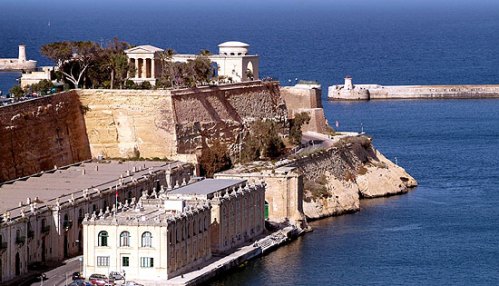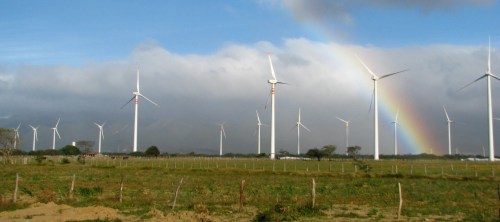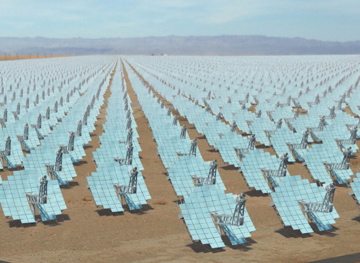photo: NRDC
I wrote this story for Grist, where it first appeared.
The climate war has shifted to California.
Proposition 23, an initiative that would suspend Assembly Bill 32 (AB 32), the state’s landmark global warming law, provides the first ballot box test for climate change legislation — and for the prospects of reviving a national cap-and-trade bill.
So far, much of the media attention has focused on Prop 23’s funding. It’s being underwritten by the Texas oil companies Tesoro and Valero along with other mostly out-of-state petrochemical and fossil fuel interests. Prop 23 supporters have contributed more than $6.5 million to the campaign.
But a review of opposition fundraising — for the No on 23 campaign — offers a revealing look at what amounts to a fight for the future, a struggle between the industrial behemoths of the old fossil fuel economy and a startup coalition of environmental groups, Silicon Valley technology companies, financiers, and old-line corporations looking to profit from decarbonizing California.
“The choice that is before California is between the new clean economy versus the dirty old economy,” says Annie Notthoff, California advocacy director for the Natural Resources Defense Council. “The Silicon Valley folks who are willing to invest in the new clean energy economy with their dollars are tangible evidence that this is an economic issue as well as an environmental one.”
The NRDC has emerged as one of the key fundraisers, funneling more than a million dollars to the No on 23 campaign to date. Big green groups such as NRDC and the Environmental Defense Fund took the lead on forging alliances with Fortune 500 companies in the unsuccessful effort to pass national climate change legislation. In contrast, the heavy hitters in California’s Prop 23 battle are green tech entrepreneurs and venture capitalists, who have traditionally shied away from electoral politics.
The last stand for climate change has brought John Doerr, a leading green tech investor with Kleiner Perkins Caufield & Byers, to the table. Doerr has given $500,000 to defeat Prop 23. And he’s not alone.
Wendy Schmidt, founder the 11th Hour Project, a Silicon Valley environmental grant-making nonprofit (and wife of Google chief executive Eric Schmidt), donated $500,000 to NRDC’s No Prop 23 Committee. (Disclosure: The Schmidt Family Foundation is a financial supporter of Grist’s, and Wendy Schmidt is a member of the Grist Board.)
Google itself hasn’t contributed to the No campaign, but last week the search giant’s green energy chief, Bill Weihl, assured a gathering at the company’s Silicon Valley headquarters that, “We’re strongly behind the No on 23 campaign” and the global warming law, known as AB 32.
When asked about Google’s potential financial support for the No campaign, company spokesperson Parag Chokshi said, “Google has been a very strong supporter of AB 32 and wants it to be implemented. We’ll continue to monitor the situation as we move forward.”
To date, the heaviest hitter on Team No is Thomas Steyer, the press-shy founder of San Francisco hedge fund Farallon Capital Management. Steyer, a big donor to Democratic candidates, has pledged $5 million and stepped forward to co-chair the No on 23 Committee with George Schulz, the Republican former secretary of state.
“I personally come at this issue as a businessperson who cares about the economic future of California as well as the environmental and security issues here,” Steyer said on a conference call late last month. “The right way to frame this is that we have a fairly stark choice to either move forward or turn back the clock.”
“We have 12,000 companies in California working on clean energy already,” he added. “It’s going to be one of the dominant spaces in the world and for us to excel and lead in this area we need a consistent regulatory framework for investment.”
Yet another mainstream investor is Robert Fisher, former chair of The Gap, the San Francisco-based clothing empire. Like Schmidt, Fisher has put up a half million dollars for the NRDC fund. And Southern California investor Anne Getty Earhart, an heir to the Getty oil fortune, donated $250,000 directly to the No campaign.
“What makes this unusual is that this is not your classic tree-huggers-versus-big business battle,” says Steve Maviglio, a longtime California Democratic operative and the chief spokesperson for the No on Prop 23 campaign. “Environmentalists, dyed-in-the-wool businessmen, tech companies — they have all been very active in fundraising, active on the lecture circuit and before editorial boards.”
You can read the rest of the story here.









